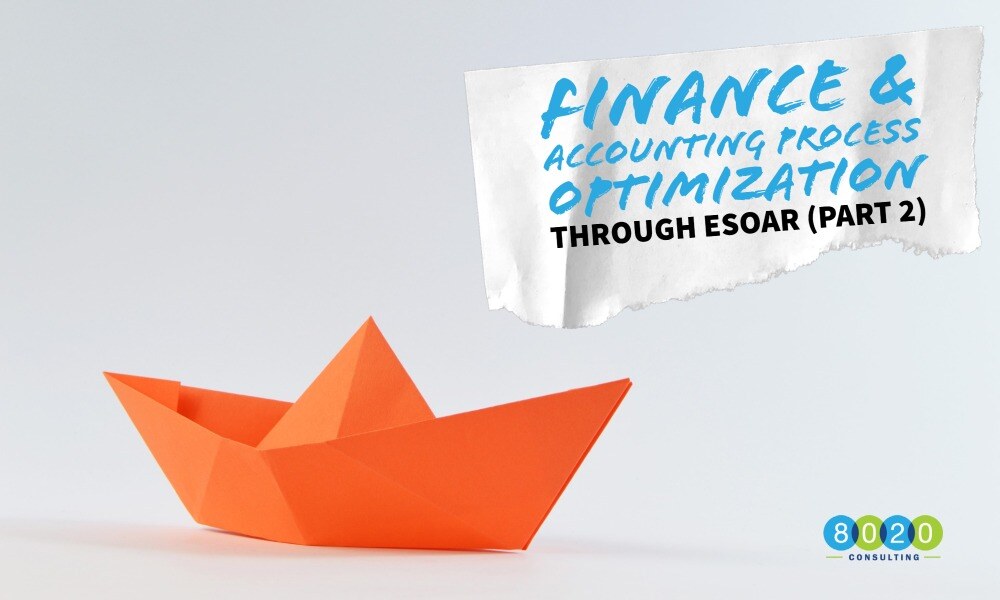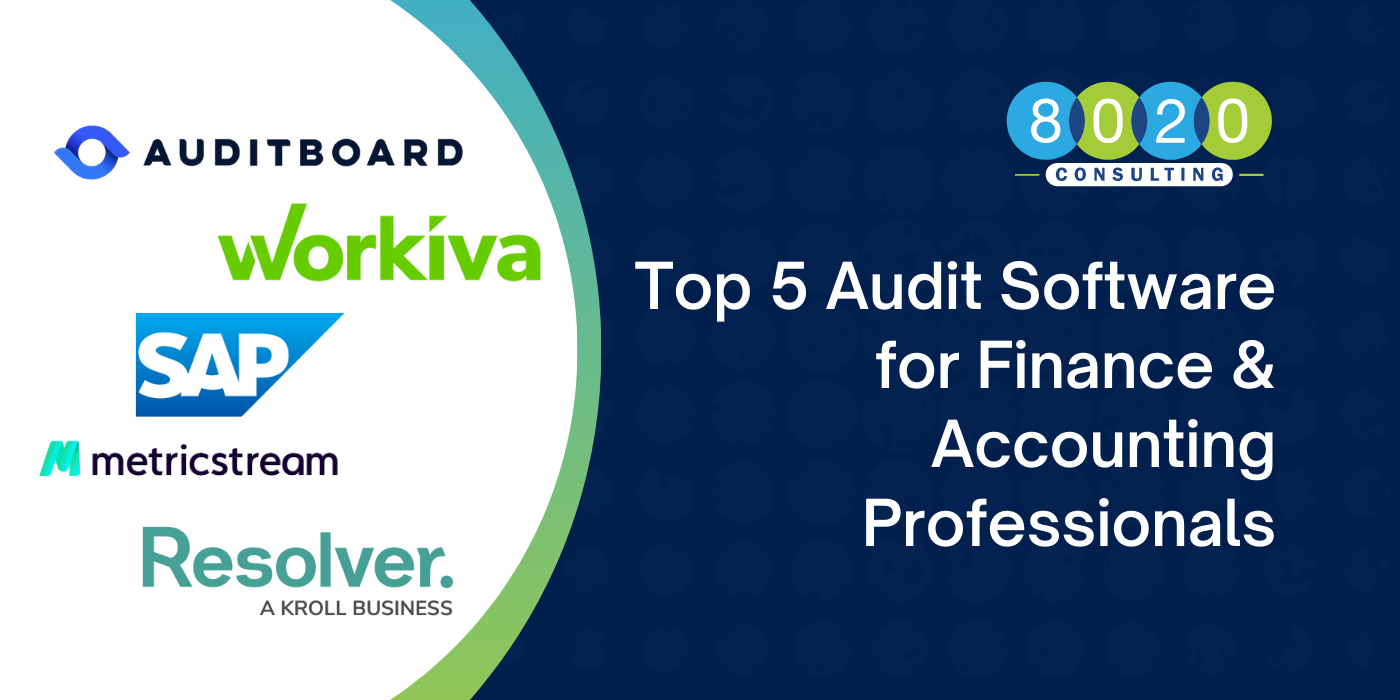
Organizations pursue process improvements to achieve a combination of higher efficiency, higher quality or better accuracy within their operations. If you’re struggling with how to improve accounting processes, you might take advantage of ESOAR, a process improvement methodology that can help you drive long-term value. When approaching processes using this methodology, one should:
- Eliminate wasteful activities impacting time, cost and effort.
- Standardize processes and templates to limit customization and variability.
- Optimize workflows, technology capabilities, documentation and reporting.
- Automate functionality using available tools to reduce manual work, increase transparency and improve accuracy.
- Robotize remaining rule-based activities performed by a human operator.
ESOAR can be applied to any part of a business, including operations, finance/accounting, supply chain and more.
Getting Started
When considering a process for ESOAR improvement, managers should evaluate the trade-off between the effort to complete the process and the resulting benefits. The following factors can be useful in an assessment:
- Criticality: Processes deemed non-critical may not be worthwhile if the effort to implement a process improvement is substantial. However, non-critical processes should receive additional scrutiny for possible eliminations.
- Frequency: Processes carried out more frequently will inherently extract more benefit when improved.
- Time and Resources: Processes requiring more time and resources could be an indication of underlying inefficiencies and larger savings opportunities.
- Complexity: Processes that are more complex may require more time to evaluate, but they also may signal underlying inefficiencies that contribute towards the complexity.
For major process improvements, it can be useful to draft a timeline or calendar that showcases major deadlines and deliverables that key contributors may already have planned. As you map out possible ESOAR projects, it will be easier to identify potential time or resource constraints.
Depending on the time available to complete, you can then evaluate how complex or how critical of a process you can improve. If a shorter window doesn’t allow for full ESOAR application, you may consider the steps you can get done in the amount of time you have. You may tackle just the “E” (Eliminate) for now and then continue to “S” (Standardize) when time allows. Another alternative is to choose a different process altogether that is shorter or simpler.
Project Sponsor
Before getting started, you may also want a project sponsor depending on the scope of the process improvement. A supervisor is a good starting place for identifying a project sponsor. If they do not assume the role, they usually can provide insights for the most eligible candidates. The sponsor’s role is to provide guidance and suggestions on proposed changes, identifying stakeholders, and the timing of the project. For more critical and complex process improvements, the sponsor also serves as an advocate for the project, exercising their relationships and/or political capital to gain access and buy-in with senior executives/stakeholders.
Eliminate
Eliminating work within a process – specifically outputs, unnecessary steps and superfluous information – is the first major stage in how to improve accounting processes.
1. Outputs
In evaluating possible eliminations, first understand the purpose of the process and eliminate work producing outputs that don’t contribute towards that purpose. For example, a process may satisfy one or more of an organization’s needs pertaining to accounting, financial forecasting, management decision support, external reporting, taxes or compliance and regulation. It’s entirely possible an entire process is no longer needed or that major portions of it can be discontinued. The following questions may help in determining the purpose of a process:
- Who needs the output?
- Why does this person/entity need it?
- When is it needed and how frequently?
- What is critical vs. “nice to have?”
If any of the above is unclear, ask the appropriate person to gain a better understanding. It may be determined that the deliverable/output is no longer useful or required, or it may be needed less frequently. Eliminate unnecessary work as appropriate.
2. Unnecessary Steps
Once the outputs and purpose are confirmed, the next step is to evaluate the procedures within the process to identify any unnecessary steps. Here are some helpful questions/tools to identify possible eliminations:
- Are there any steps that don’t contribute to the final output? Create a process map for any ambiguities.
- Are any steps redundant?
- Are there any calculations or references being maintained that don’t contribute to the final output?
3. Superfluous Information
The final step is to eliminate superfluous information. Superfluous information in working files makes calculations more difficult to review for managers, auditors and other third-party users. It also creates challenges for new hires to learn processes, especially when assuming roles suddenly vacated prior to cross-training. Possible eliminations within working papers include:
- Outdated, redundant or compromised reference sheets
- Prior period calculations (that aren’t referenced/linked to current period calculation)
- Personal notes or calculations that are obscure to other users
- Columns, rows or sections within a sheet that are no longer being updated, referenced or used
- Hidden rows and columns
- Erroneous formulas
Additionally, files within a shared directory that are no longer used or referenced, or files that do not pertain to the pertinent month/quarter/year, should be archived or deleted.
Related Posts:
Standardize
The next process improvement stage is standardization, which is recommended when multiple processes exist to produce similar outputs. This is common within enterprises with multiple entities (e.g., business units or international offices). Processes with these characteristics are ideal candidates for standardization:
- Routine, regularly occurring
- Repetitive in nature
- Results/output varies depending on methodology used
- Independent results are consolidated
When implementing a standardized process, make sure the process is well conceived and contains most, if not all, of the critical features currently relied upon by existing processes. One important principle to remember in how to improve accounting processes is that your standardized process should represent the best practice available to the organization. Developing best practice processes can be broken down into five steps:
1. Collect Information
In order to collect the right information about the processes you’re examining, first identify the subject matter experts (SMEs). These are people most familiar with their business entity’s relevant process who also have access to requisite working files and supporting systems. It may be necessary to consult with a supervisor or local office manager to identify appropriate SMEs for your standardization.
After SMEs have been identified, use surveys, questionnaires, interviews, meetings, phone conversations or any other preferred method to collect information about an entity’s process. Be sure to inquire about critical and non-critical outputs, the timing of their delivery and the level of precision required. Also, inquire on the process to deliver the outputs, including all inputs, systems/software requirements, staff roles and responsibilities and the timing of each step in the process. Lastly, you want to understand the SMEs’ qualitative assessment of the process, including what works well and where there might be shortcomings. Make sure you use a standard set of questions to ask every SME, so collected information is consistent, which will help with comparability.
2. Compare and Evaluate
As you collect information from SMEs, you’ll want to organize the information in a way that allows for easy comparisons. With the information at hand, identify critical outputs and commonalities from the process evaluations. Identify which attributes are common amongst the most and least effective processes. Also, note any non-critical steps, “nice to haves” and exceptions that can be put in a parking lot for now.
3. Create Standardized Framework
After comparing and evaluating SME responses, the next step is to create the first draft of the standardized process that delivers as many of the critical outputs as possible, while minimizing complexity. In some situations, it won’t be possible to incorporate feature(s) that only a small portion of the population considers critical. In these cases, be sure to recognize these omitted features and highlight potential substitutes. Also, keep the initial draft flexible enough to incorporate feedback from stakeholders. The goal is to have something that is presentable and well-conceived, but also pliable. Lastly, review your framework with your project sponsor and adjust as necessary.
4. Receive Buy-in from Stakeholders
With your prototype available, the next step is to pursue buy-in from process stakeholders. Stakeholders are typically people who are responsible or accountable for the outputs, or leaders who use the outputs to inform decisions. Potential stakeholders include Finance and Accounting personnel, Financial Compliance, business unit general managers or executives, Legal, HR, Tax or anyone else who may be impacted either directly or indirectly. Receiving their buy-in ensures there are no surprises, and that they have a baseline of comfort with the changes.
Once the stakeholders have been identified, choose the best medium to share the proposed standardized process and modify the communication based on the audience. Whether you choose to distribute a PowerPoint deck via email, conference call or in-person depends on a variety of factors including criticality, complexity and geographical considerations. For example, you may choose to send an email for a simple process or opt for a conference call for a complex process involving SMEs from different offices. You may also consider using multiple meetings to allow ample time for SMEs and stakeholders to ask questions and share feedback for critical or complex processes. Don’t forget to host conference calls or meetings that are convenient for international stakeholders in different time zones.
5. Implement
Once buy-in is received from all stakeholders, the next step is to implement the standardized process. However, before doing so, you’ll want to complete the development of beta templates, desktop procedures and quality assurance programs if you haven’t already. Once those are completed, you can schedule and conduct training with process operators/preparers, as well as a tentative “go-live” date. Depending on the scope or complexity of the project, you may decide to go live in phases or “waves” to collect focused feedback and make necessary adjustments before subsequent waves. You may also consider a pilot run with only one or two entities going live in the first wave.
Want to learn more about how to improve accounting processes using ESOAR?
Read “Finance & Accounting Process Optimization and More Through ESOAR (Part 2)!” It explores optimization, automation and robotization.
If you’d like a comprehensive resource about accounting process improvement strategies, you can also download our new whitepaper. It includes both blogs, more context and a example application of the ESOAR methodology in which a company works to improve a burdensome internal accounting process:

About the Author
Justin is a CPA with more than 15 years of progressive finance and accounting experience within a wide range of dynamic roles in the media and entertainment industry. Prior to joining 8020, Justin was instrumental in establishing a global shared financial service department at Warner Bros., where he developed world-class teams and engineered highly effective accounting processes to drive efficiencies at scale. Additionally, he’s held leadership roles managing multiple technology budgets and has directed business realignments for several entities. His expertise includes FP&A, financial reporting & accounting, financial modeling, business integrations, change management and business process optimization. Justin earned his MBA with a specialization in Global Management from UCLA Anderson School of Management and earned his B.A. in Business Economics from the University of California, Santa Barbara.







